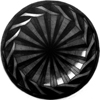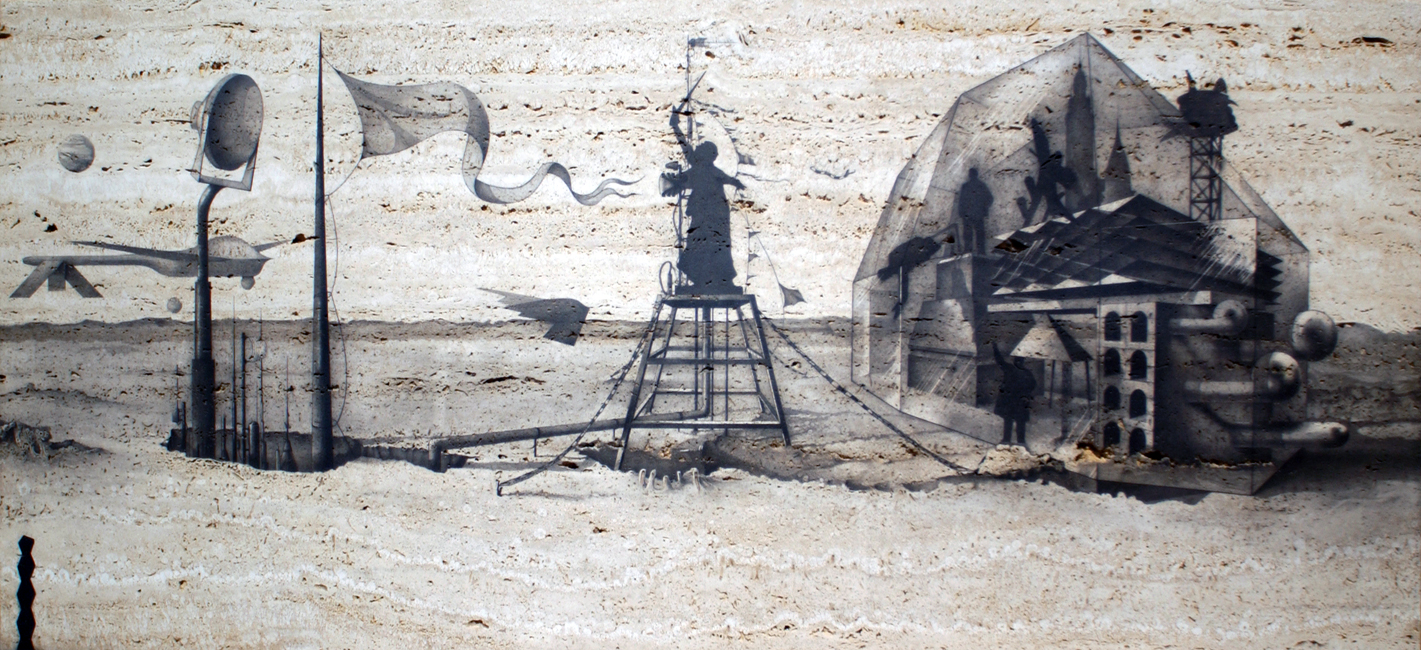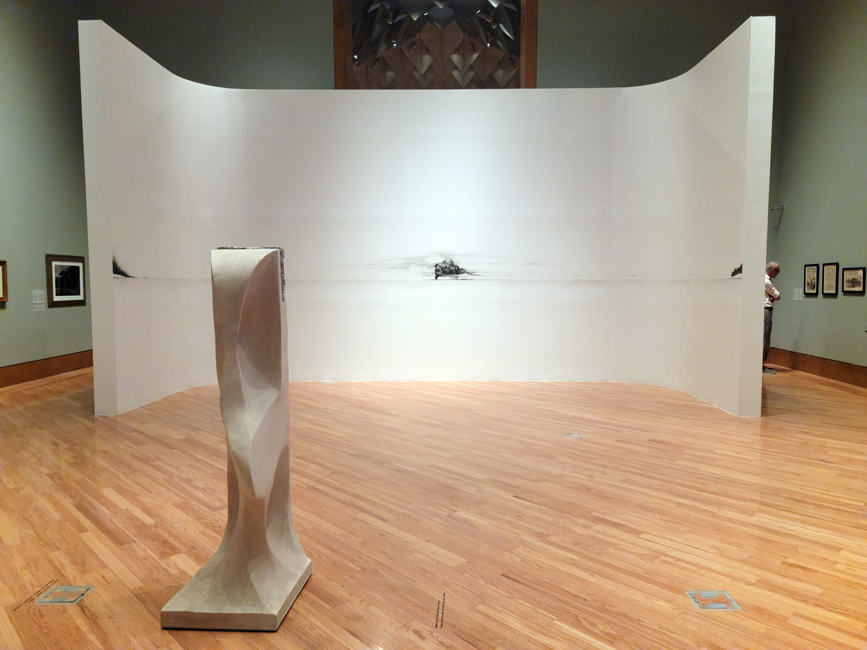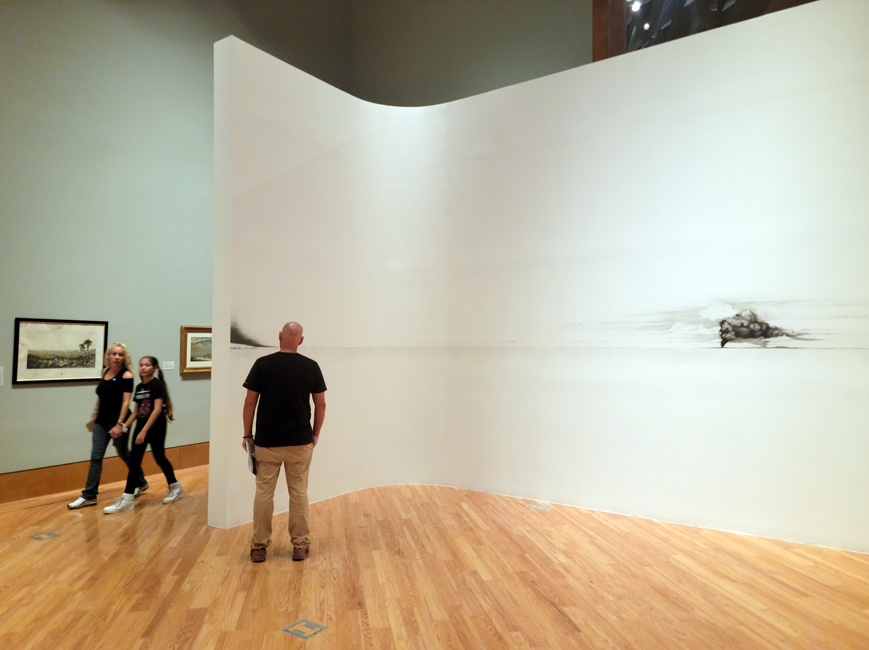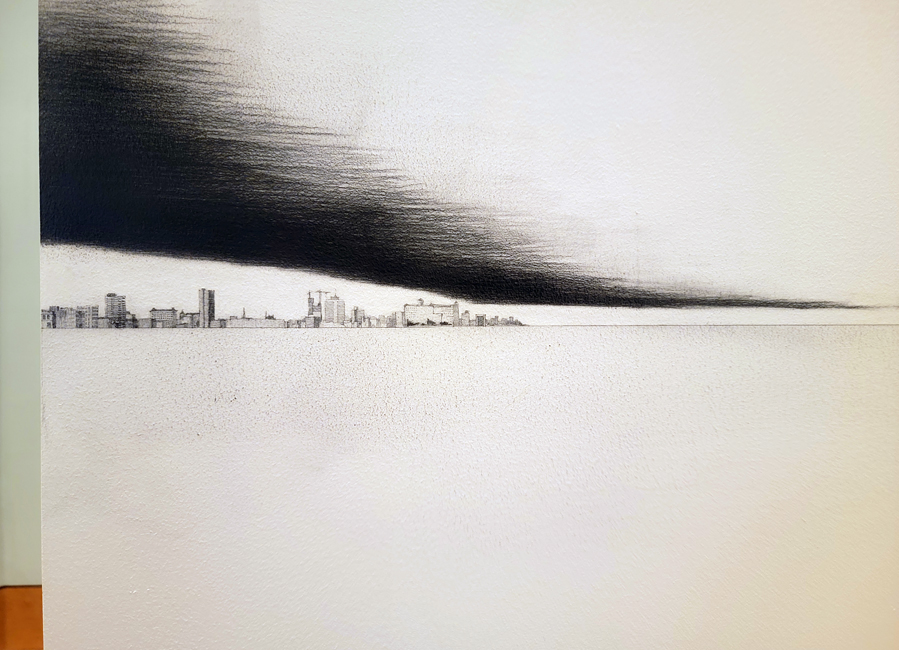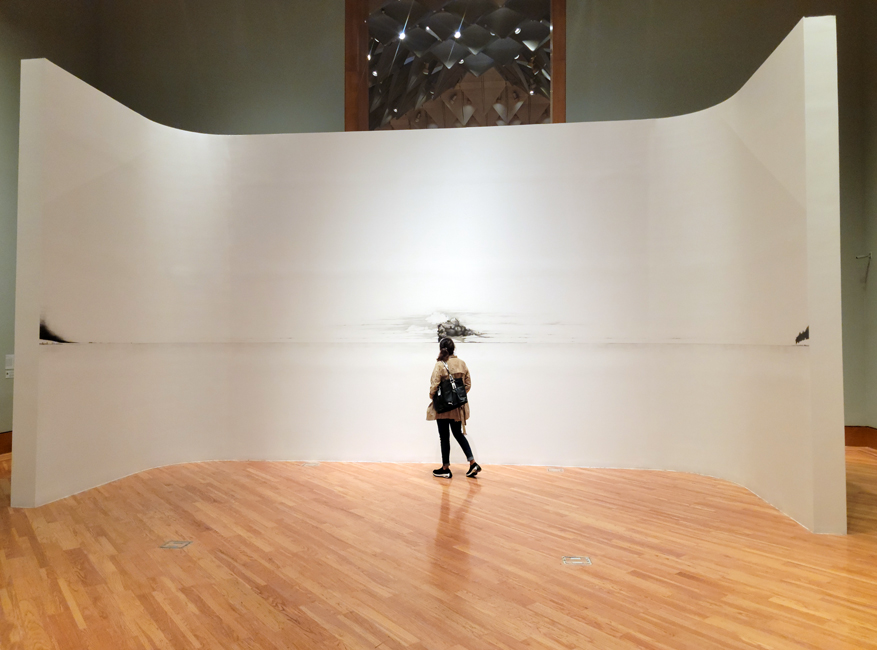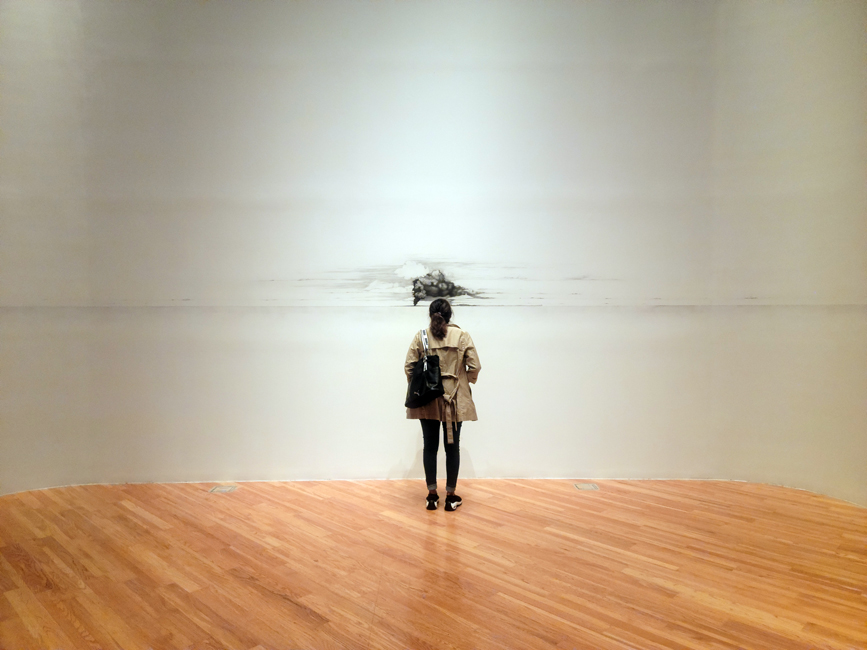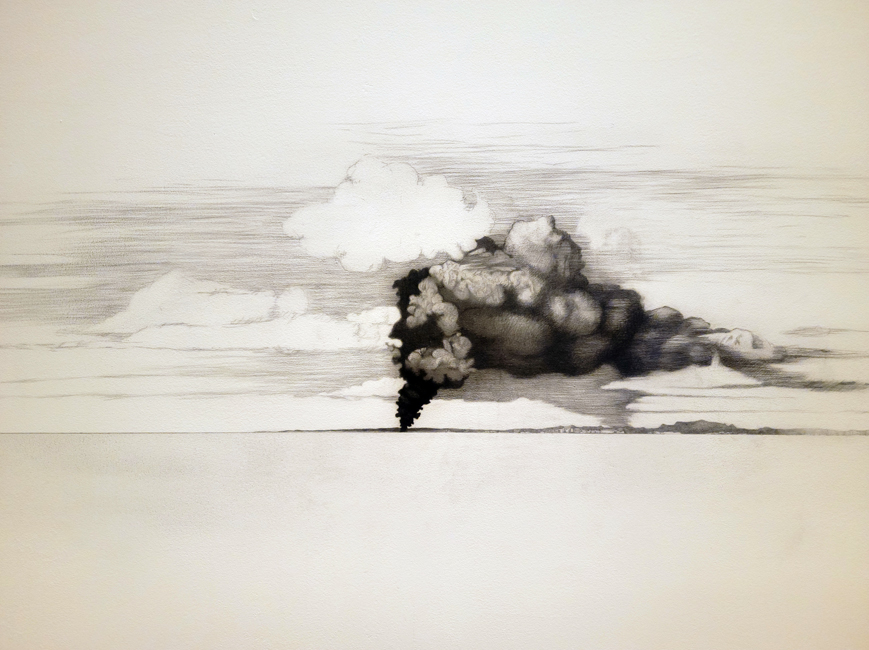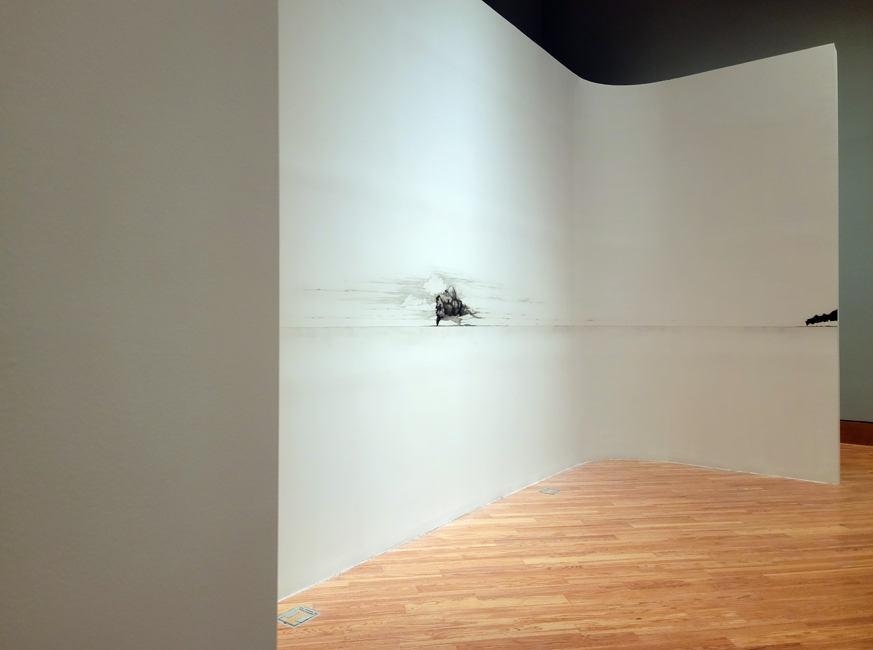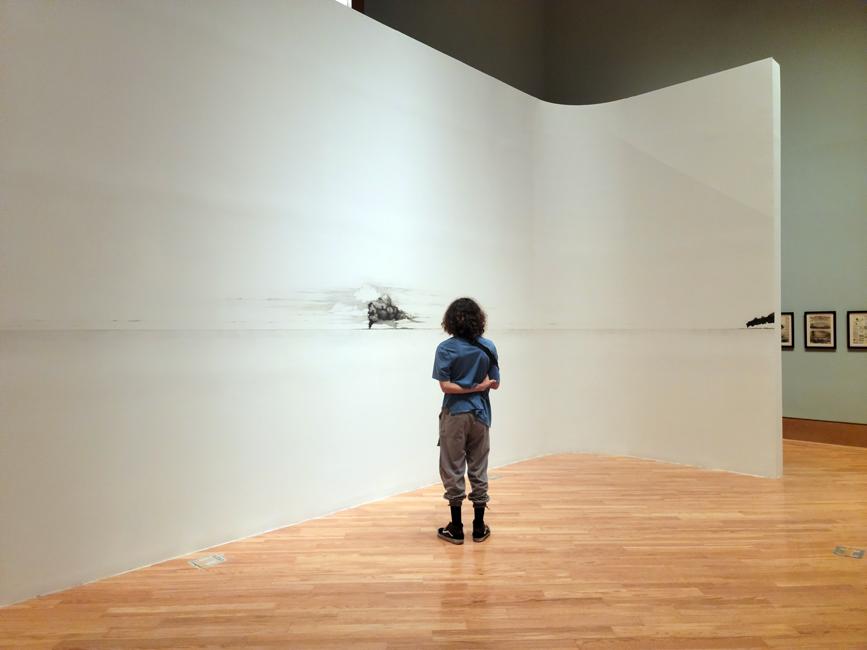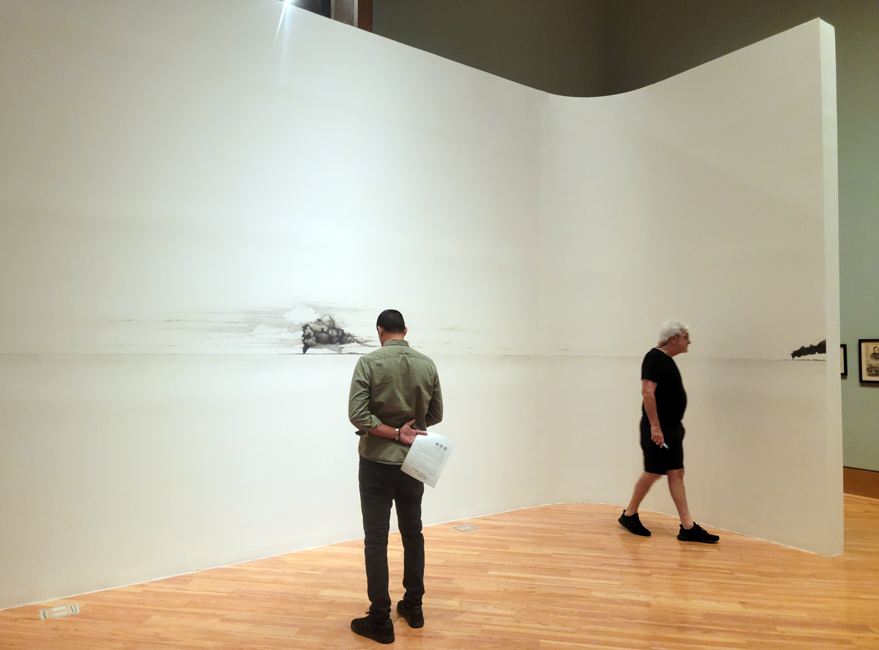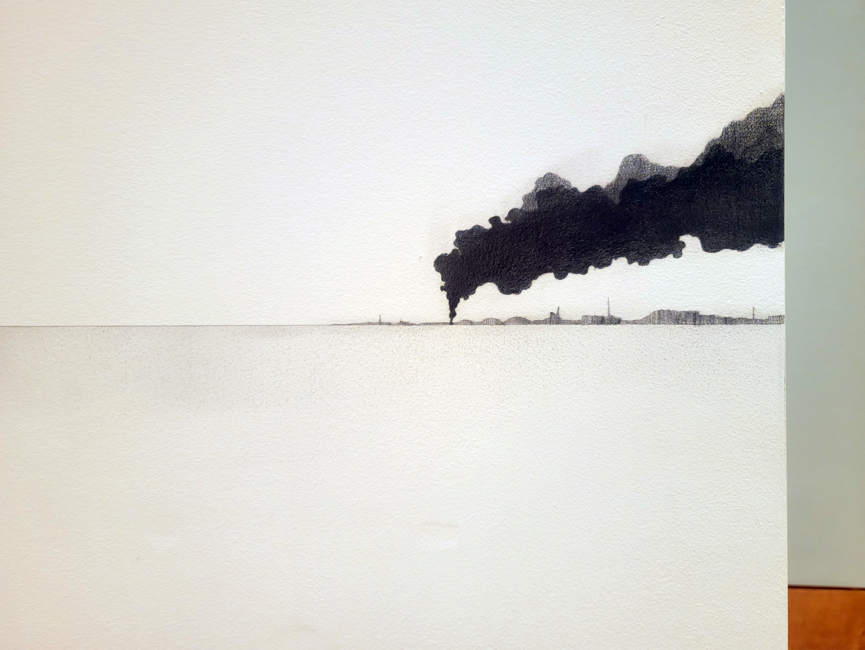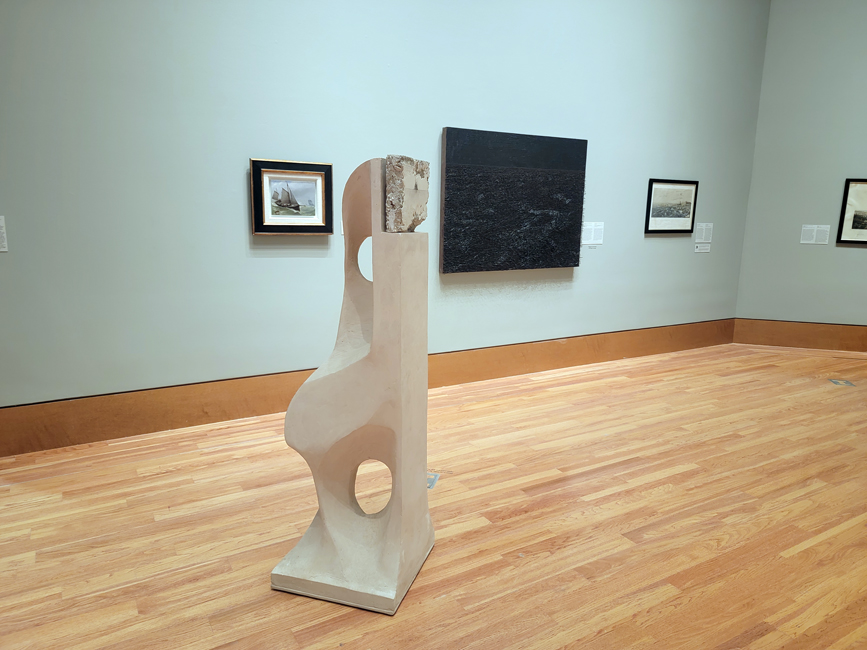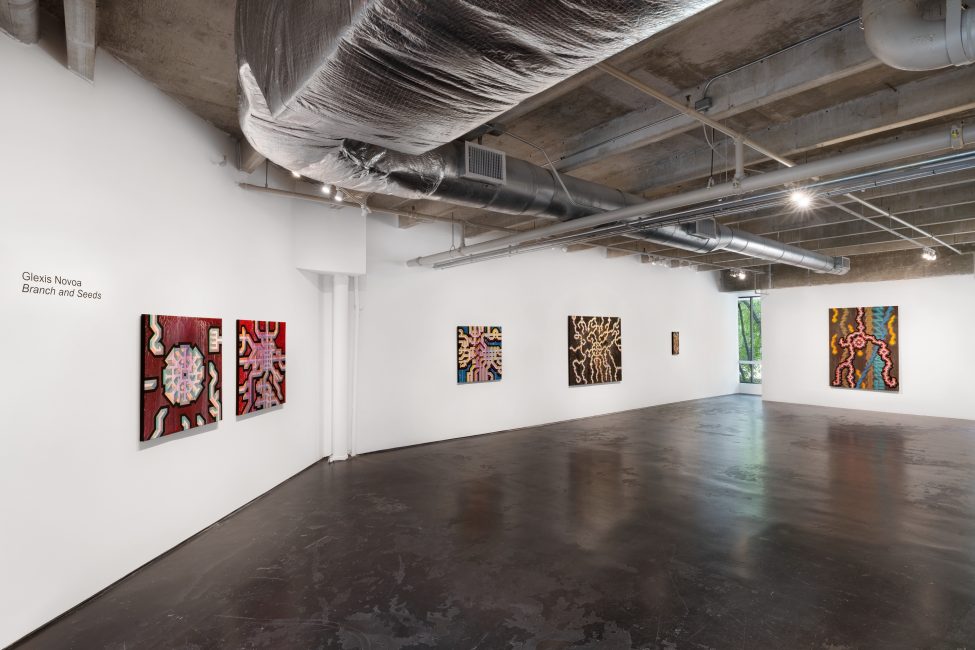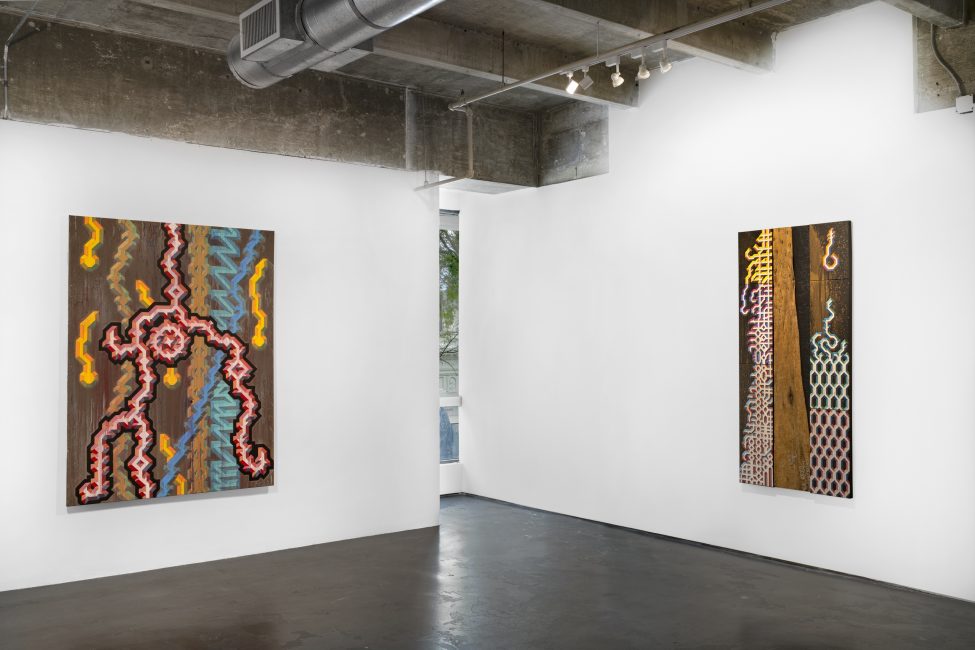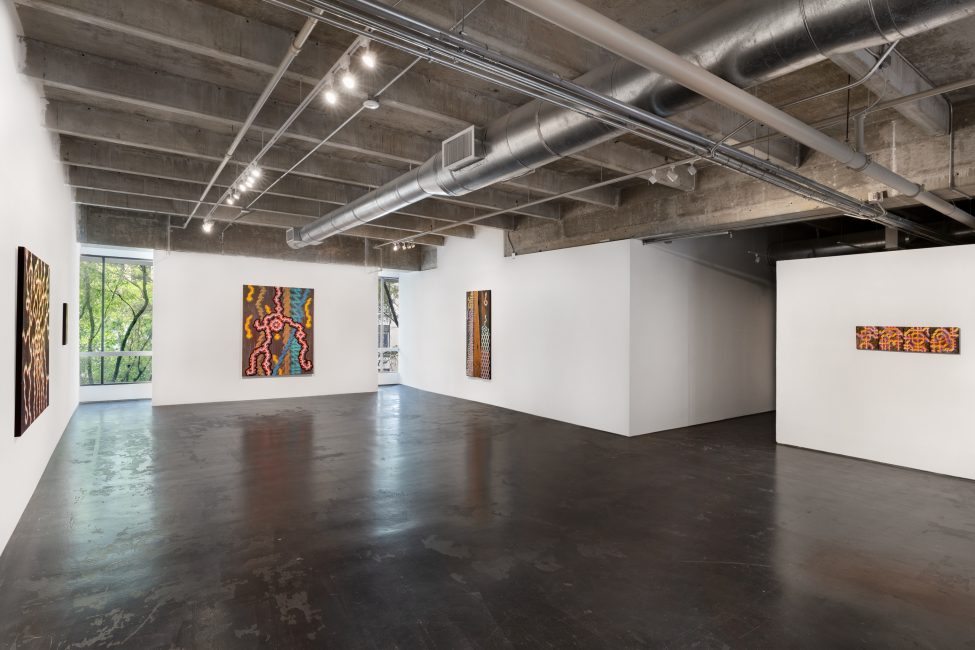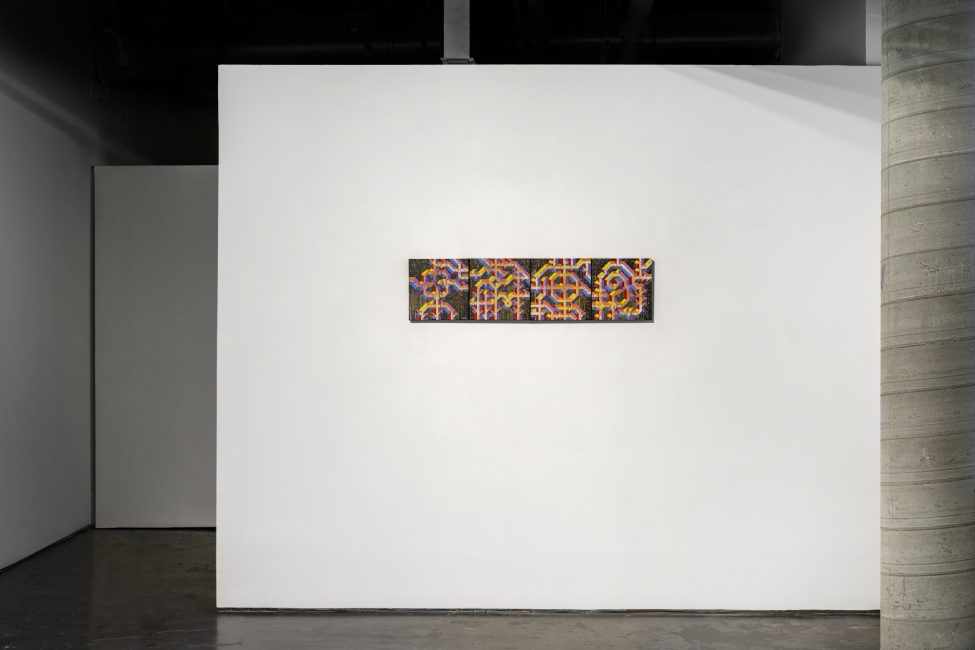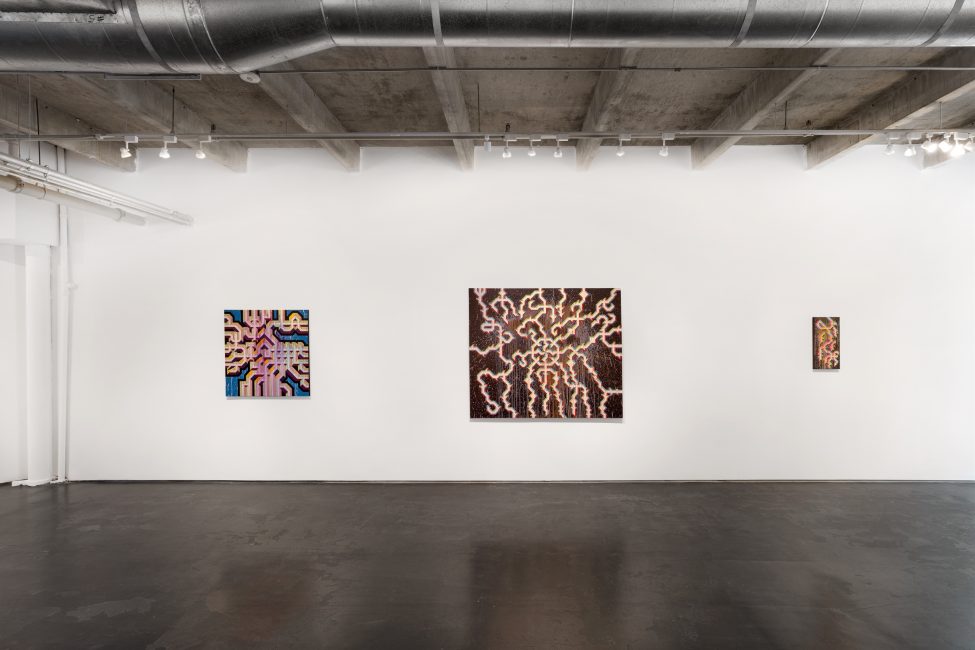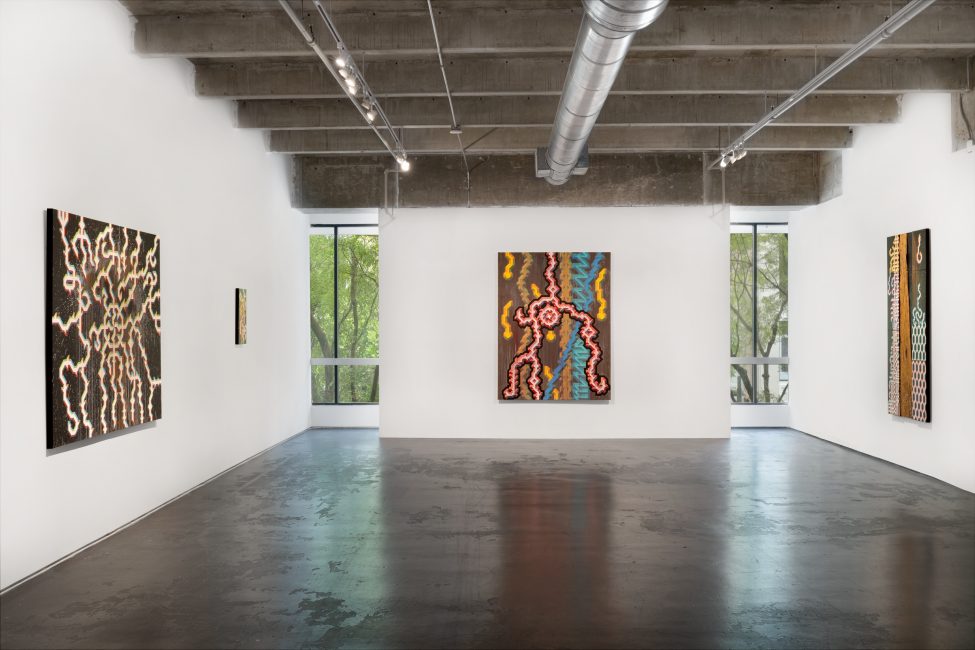Permanent Collection Exhibition (Group exhibition); Perez Art Museum Miami, Miami. October, 2023 – April, 2024.
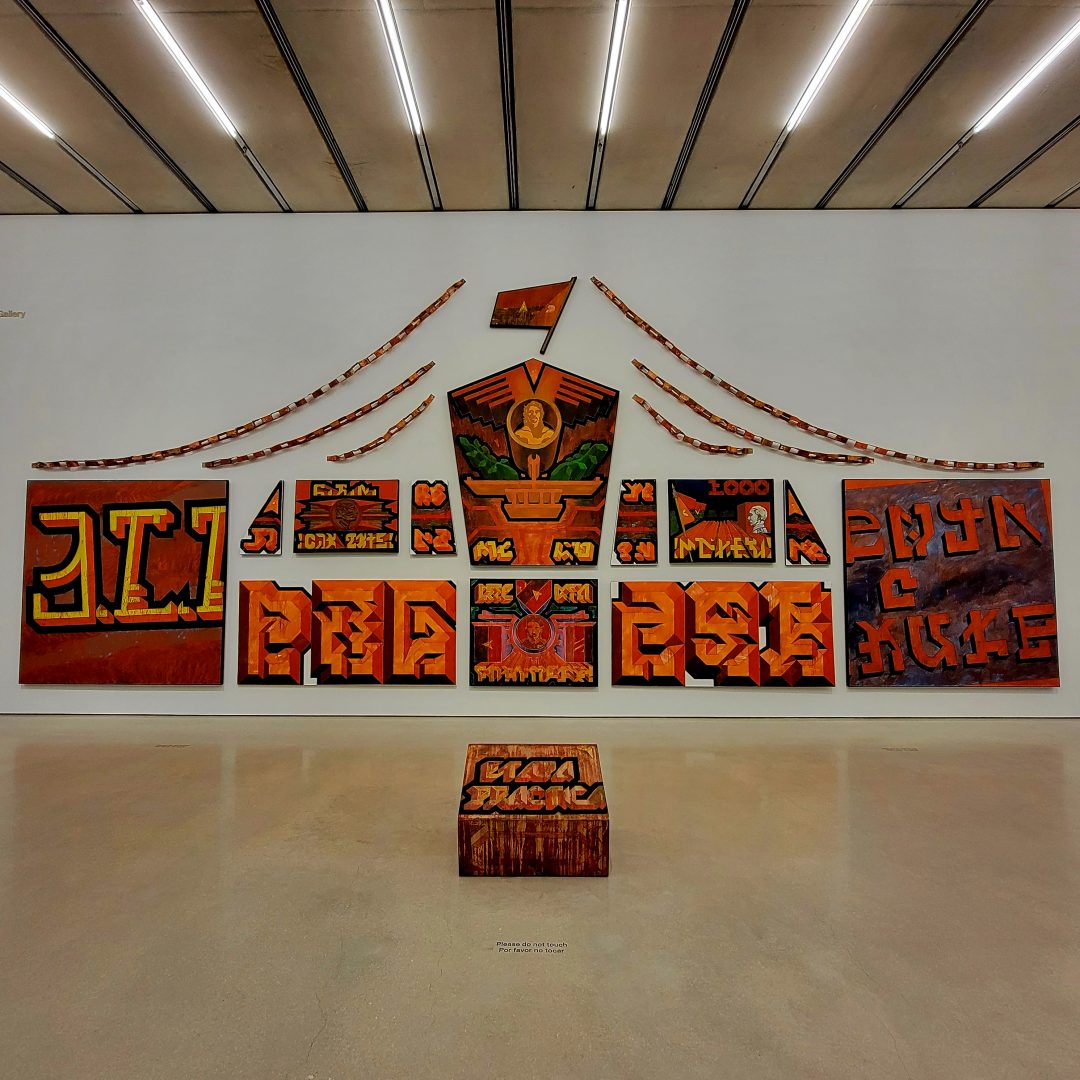
Untitled ‘Practical period’ | III Havana Biennale 1989 oil on paper, wood & canvas, wooden structure, 16 x 49 feet. At Perez Art Museum Miami, Miami. Pérez Art Museum Miami Permanent Collection, Miami
Permanent Collection
Following 25 years of effort, and thanks to the generosity of hundreds of supporters, the museum’s collection has grown to encompass nearly 3,000 works of art, a selection of which is currently on view in eight galleries spread throughout the building—two on the first floor and six on the second floor. With a strong emphasis on art that relates to the US Latinx experience, the African diaspora, Latin America, and the Caribbean, the Pérez draws his inspiration in this endeavor from Miami’s rich cultural diversity and unique position at the crossroads of the Americas. Alongside a vigorous lineup of temporary exhibitions, special events, and educational programs, these permanent holdings testify to PAMM’s ambition to provide enriching experiences with great art for the benefit of current and future generations.
Contemporary Art at the Museum of Fine Arts, Houston, Hidden Histories (Group exhibition); Museum of Fine Arts, Houston. September, 2023 – April, 2024.
Hidden History (Constantin Brâncuşi, MQ-1 Predator & Mamayev) 2010 graphite on marble, 16 ½ x 36 inches. The Museum of Fine Art Houston, Latin American and Latino Art collection
Contemporary Art at the Museum of Fine Arts, Houston
The Nancy and Rich Kinder Building is dedicated to the Museum’s international collections of modern and contemporary art. The soaring spaces feature displays that span media encompassing painting and sculpture, craft and design, video, and immersive installations.
The third-floor galleries are devoted to thematic exhibitions, with installations of art from the 1960s onward.
Hidden Histories explores the idea of anti-monuments through the work of artists who memorialize ordinary citizens or places that have been ignored, sidelined, or deliberately obscured. Unconventional means and strategies encourage viewers to think critically about the past and its relevance for the present and future. Featured artists—from Africa, Asia, Europe, Latin America, and the United States—include: Josef Albers, Michael Armitage, Ruth Asawa, Radcliffe Bailey, Dawoud Bey, Paul Briggs, Marta Chilindron, Francesco Clemente, Carlos Cruz-Diez, Adriana Corral, Jamal Cyrus, Georg Dobler, Nicole Eisenman, Fred Eversley, Teresita Fernández, Louis Fratino, Naum Gabo, Gego, Gilbert y George, Sam Gilliam, Karen Gunderson, John Mark Hall, Hans Hofmann, Zhang Huan, Tom Huck, Kahlil Joseph, Anselm Kiefer, Ellsworth Kelly, Gyula Kosice, Shiro Kuramata, Joris Laarman, Richard Long, Julie Mehretu, Hélio Oiticica, Agnes Martin, Oscar Muñoz, Ron Nagle, Glexis Novoa, Anna Park, Gerhard Richter, Fanny Sanín, Joyce J. Scott, Soledad Salamé, Ettore Sottsass, Keith Sonnier, Rashod Taylor, Jennifer Trask, Tone Vigeland, Vincent Valdez y Billie Zangewa.
In the Mind’s Eye: Landscapes of Cuba (Group exhibition)
September 24, 2022 — January 15, 2023
The Great Explosion, Matanzas 2022 site-specific graphite wall drawing; The Patricia & Phillip Frost Art Museum, Miami. Courtesy of the artist and David Castillo
Novoa created this work for the exhibition to draw attention to the political landscape and recent events in Cuba. In August 2022, a reported lightning strike at a fuel storage facility in Matanzas killed several people including firefighters who were using decaying equipment. A toxic plume of smoke engulfed Matanzas and traveled more than 60 miles to Havana.
While a large-scale evacuation ensued, little official information about the disaster was offered to a population already struggling with severe fuel shortages and power outages. As Novoa’s drawing beckons visitors to become immersed in the drawing and to look more closely at his deliberate rendering of the shoreline, it also encourages further consideration of power imbalances and inequity.
Glexis Novoa: Branch and Seeds
September 16 – November 13, 2021
David Castillo presents Glexis Novoa: Branch and Seeds, a solo exhibition of paintings made by the artist in the last year.
In an evocative and rhythmic visual vocabulary of snaking, hardline abstractions, Novoa’s paintings combine recursive geometries, fractals, and fragments of language to insinuate views of architectural schematics, molecular formations, and the widespread anxieties of viral spread. Conceived and created in the wake of COVID-19—the artist first began work on this series during the beginnings of the quarantine period—these compositions envision abstraction through the lens of the persisting global pandemic and its far-reaching effects. This approach imbues the formalist grammars of Novoa’s pieces with an enduring subjectivity reflective of the current social, cultural, and political moment, inflecting these works with the sense of disruption, turbulence, and unpredictability that defines this time.
Novoa grounds his painterly practice in a design language that draws stylistically from Russian Constructivism, an artistic movement and philosophy of the early twentieth century that centered the utilitarian power of art as a vehicle for the spread of political messaging; it emerged alongside the Russian Revolution to reflect the modernizing and populist ideals of its time. And Novoa reaches into this history with his own technique to draw out the potentials of art to reflect the spirit and fervor of the current era, the ideologies forwarded now by dominant power structures, and, reflexively, the subversive possibilities of art to critique and offer pointed commentaries of the same. To this end, the artist employs a pictorial lexicon that he terms Etapa Práctica, Spanish for Practical Stage, that frames the painting itself (“a splendid conventional object” in Novoa’s words) as a platform that is capable of navigating both within and outside of the institutions it critiques by way of coded commentaries and subject matter. In the context of this series, the pandemic and its politicization is construed in terms of patterns, forms, and color relationships that suggest growth, spread, and upheaval through otherwise aesthetically appealing and unassuming means.
In the piece Mutation IV, language becomes critical to Novoa’s translation of the virus from a real biological and cultural agent into one that is conceived pictorially in symbolic terms. Letters and word fragments break through from under or between the digressing designs of a piece, never fully realizing a complete expression but articulating just enough for the viewer to fill in what is lost amid the tumult of the painted patterns. Novoa leads his audience to a reading of the work but does not offer it to them forthright, implying the need for similar treatment—a closer, more nuanced consideration of a message not so easily revealed—for the paintings in the exhibition.
The materials from which these works are made are similarly iconographically loaded. The series was first created during a time of widespread shortages and interruptions to global supply chains. In light of this, Novoa resourcefully created a number of his canvases from materials he readily had on hand in-studio, reflecting the immediate conditions of scarcity that marked much of this early period of the pandemic. The socially isolating effects of the quarantine, as well, inflect the material lexicon of this body of work; the piece Fruta bomba, for example, bears strips of bark from a papaya tree, a marker of the artist’s extended contemplation of nature and the desire to get out in the face of extended periods of prescribed isolation during the pandemic.
Branch and Seeds in many ways mirrors the germination of an idea—or an image, a language, a population, a virus—that builds over time, and how it takes root, grows, and becomes generative of others that extend from the original. The works in this exhibition play with notions of virality as a function of the spread of information within society, in an epidemiological sense relating to the spread of disease, and their conflation within the present as the concept of a virus spreads beyond its popular conceptions and takes on new, destabilized, and multifaceted meanings. Ultimately, Novoa imagines Branch and Seeds as a recursive exercise and tool that questions the propagation and transmission of information; how it spreads, by whom, and to what ends.
Since 1987, Glexis Novoa’s works have been exhibited nationally and internationally, featured in solo exhibitions and projects at The Bass Museum, Miami Beach, FL; Worcester Art Museum, Worcester, MA; The Snite Museum of Art, University of Notre Dame, Notre Dame, IN; Castillo de la Real Fuerza, Museo Nacional de Bellas Artes, Havana, Cuba, among many others. Novoa’s works have been included in group exhibitions at institutions including Today Art Museum, Beijing; Queens Museum, New York; Art Museum of the Americas, Washington D.C .; Museum of Fine Arts, Houston; Walker Art Center, Minneapolis; Ludwig Forum für International Kunst, Aachen, Germany; Padiglione d’Arte Contemporanea, Milan; Museo di Arte Moderna e Contemporanea di Trento e Rovereto, Trento, Italy; Center for Contemporary Art Laznia, Gdansk, Poland; Museo Nacional Reina Sofía, Madrid, Spain; Perez Art Museum Miami, FL; Mediations Biennale, Muzeum Narodowe, Poznan, Poland; El Museo del Barrio, New York, NY; Museo Del Palacio de Bellas Artes, Mexico City, Mexico; Exit Art, New York, NY; City Art Museum Ljublana, Ljublana, Slovenia; Centro de Arte Contemporáneo Wifredo Lam, Havana, Cuba; The University Art Museum, University of California, Santa Barbara, CA, Centro de Cultura Contemporanea, Barcelona, Spain; Weatherspoon Art Museum, University of North Carolina, Greensboro, North Carolina and Massachusetts College of Art, Boston, MA, among many others. Novoa has been honored with awards including Creator Award Winner, Oolite Arts, Miami, The Joan Mitchell Foundation Grant, the Cisneros Fontanals Art Foundation Grant, and he has been a recipient of the Cintas Fellowship Award. Novoa has held residencies at Skowhegan School of Painting and Sculpture, Skowhegan, ME; Residency Unlimited, Brooklyn, NY; and McColl Center for Art + Innovation, Charlotte, NC, among others. Novoa’s works are held in the collections of prestigious institutions nationally and internationally, including Lehigh University Art Galleries Teaching Collection Bethlehem, Pennsylvania; Rockefeller Brothers Fund New York; Nassau County Museum of Art Long Island, New York; Pérez Art Museum Miami Miami, Florida; Centro Wilfredo Lam, Havana, Cuba; Cintas Fellowship, New York, NY; Cisneros Fontanals Art Foundation, Miami, FL; Ludwig Forum Für Internationale Kunst Aachen, Germany; Museo Nacional de Bellas Artes, Havana, Cuba, and others. Novoa was born in Holguín, Cuba and currently lives in Miami, FL. He received a bachelor’s degree from The National School of Art, Havana, Cuba.
